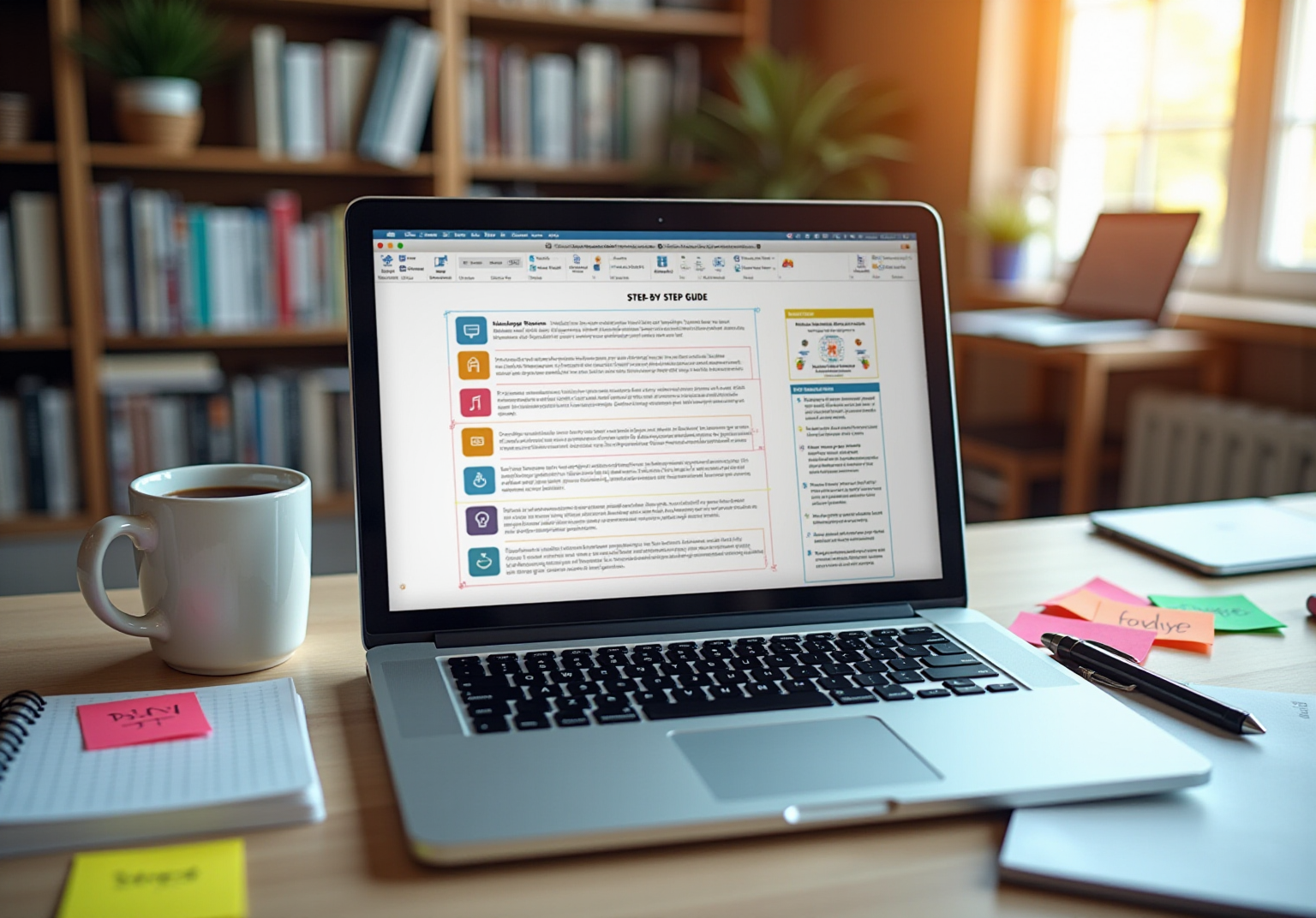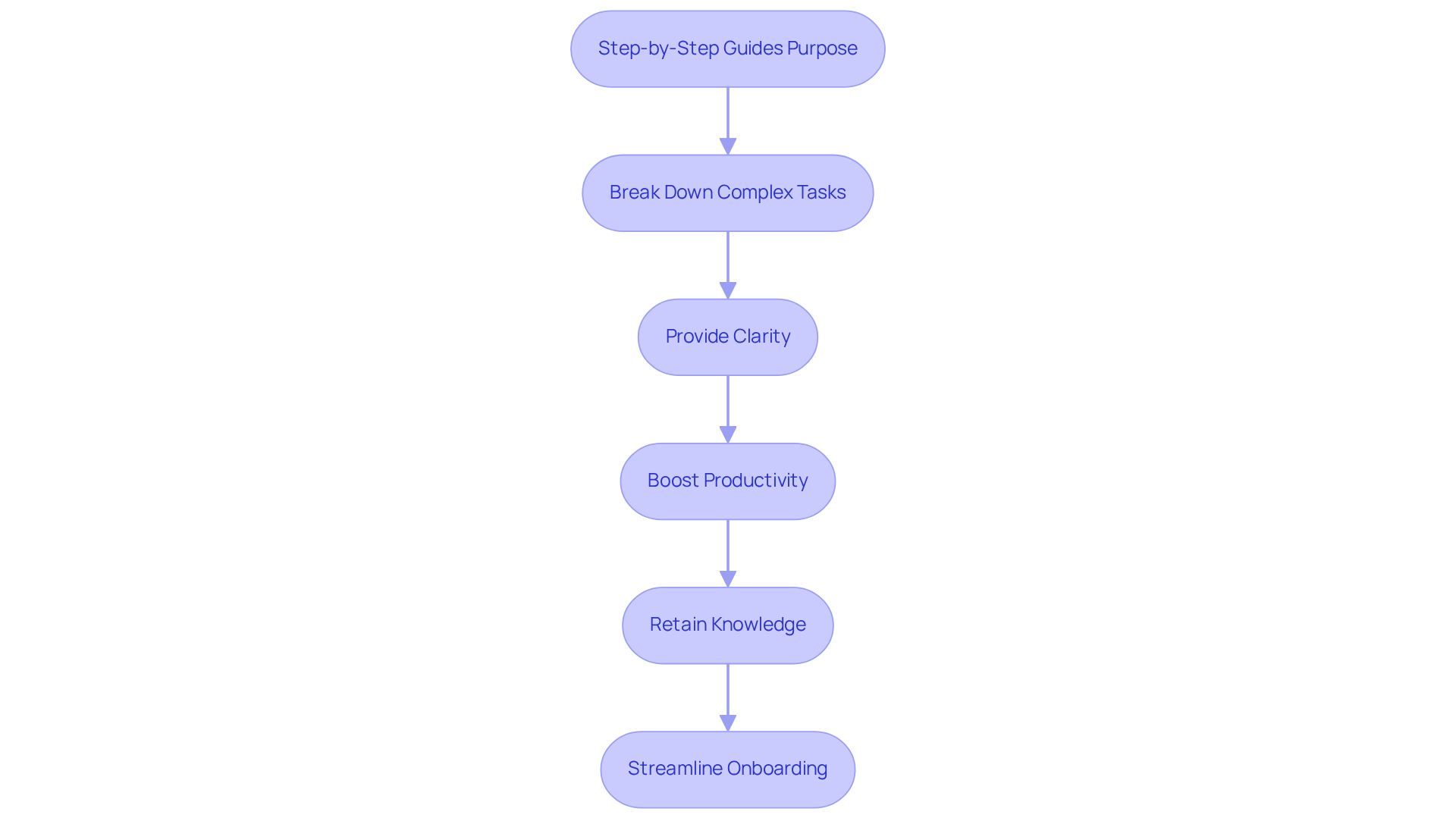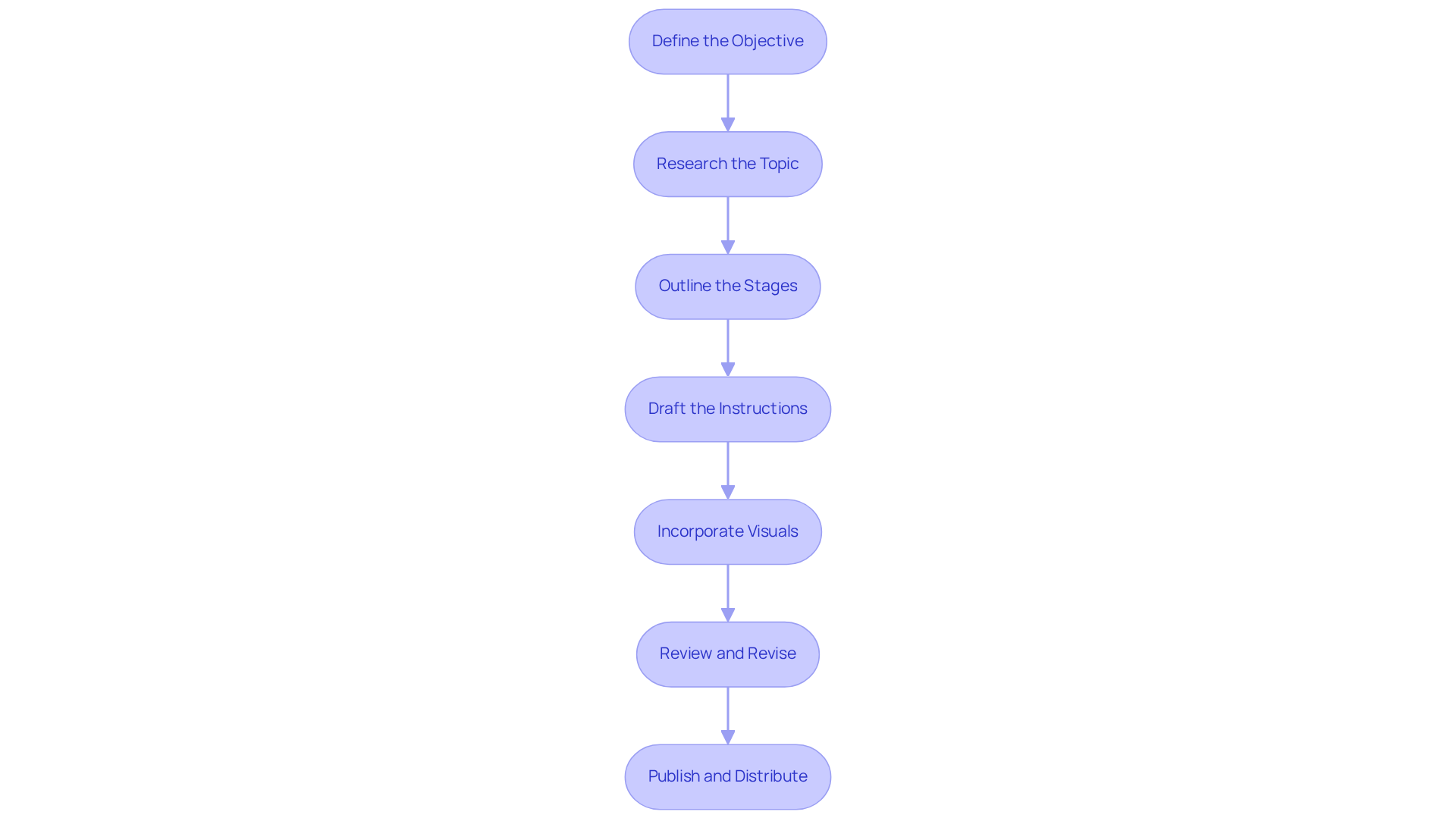
Process Improvement through Documentation
|
October 16, 2025
|
Step by Step Guide Examples for Effective Documentation Creation
Overview
You might be wondering how to create effective step-by-step documentation. Well, this article is your go-to guide! It covers everything you need to know about making your documentation clear and structured. We’ll dive into:
- Why clarity is key
- How to tackle common challenges
- What essential components you should include, like catchy titles and easy-to-follow instructions
- Using visual aids to make your guides even more user-friendly
Now, let’s think about what makes a guide truly usable. You want your documentation to stay relevant and accessible, right? We’ll share some strategies that not only enhance usability but also keep your audience engaged. By the end, you’ll have a solid understanding of how to tackle your documentation challenges and create something that truly resonates with your readers. So, let’s get started on this journey together!
Key Highlights:
- Step-by-step guides simplify complex tasks into manageable actions, enhancing clarity and guidance.
- SowFlow's documentation solution allows teams to quickly create and update manuals, boosting productivity and knowledge retention.
- Key components of an effective guide include a clear title, understanding the target audience, sequential instructions, visual aids, real-life examples, troubleshooting tips, and a conclusion.
- A structured process for guide creation involves defining objectives, researching the topic, outlining stages, drafting instructions, incorporating visuals, reviewing content, and distributing the guide.
- Common issues in guide development include lack of clarity, inadequate visuals, overly complex steps, insufficient testing, outdated information, and accessibility concerns.
- Addressing these challenges through simplification, enhanced visuals, user testing, regular updates, and accessibility considerations can improve the effectiveness of guides.
Introduction
Creating effective documentation is super important in a world where clarity and accessibility really matter. You might be wondering, how can step-by-step guides help? Well, they’re essential tools that turn complex tasks into manageable actions anyone can follow. In this article, we’ll dive into the art of crafting these guides, highlighting key components and structured processes that not only enhance understanding but also boost productivity.
But here’s the kicker: despite their importance, many folks still struggle with common pitfalls in guide development. So, what are the secrets to overcoming these challenges? Let’s explore how to ensure that your documentation truly serves its purpose and connects with your audience!
Understand the Purpose of Step-by-Step Guides
You might be wondering how step by step guide examples can really make a difference. Well, they’re essential for creating step by step guide examples that break down complex tasks into bite-sized actions. They provide clarity and guidance, offering step by step guide examples to help you navigate processes without any hassle.
With SowFlow's instant documentation solution, your team can whip up and update manuals in no time, giving everyone immediate access to the information they need. This not only boosts productivity but also helps retain knowledge within your organization.
When resources are tight, these effective tools let your team concentrate on what they do best while keeping essential processes documented and easy to find. It’s all about streamlining onboarding and sharing knowledge, making it easier for everyone to get on board.

Identify Key Components of an Effective Guide
Are you interested in creating an effective step by step guide examples? Let’s break it down into some key components you’ll want to include:
- Clear Title: You’ll want your title to quickly convey what this document is all about, so users can instantly grasp what they’re going to learn.
- Target Audience: Think about who this guide is for. Knowing your audience will help shape the language, tone, and complexity of your instructions.
- Sequential Instructions: Break the process into clear, actionable steps. Each measure should be concise and easy to follow—no one wants to get lost!
- Visual Aids: Don’t forget to add images, diagrams, or screenshots. These can really enhance understanding and provide that visual context we all appreciate.
- Examples and Scenarios: Use real-life examples to show how these steps apply in practical situations. It makes your guide relatable and much easier to digest.
- Troubleshooting Tips: Include common issues and their solutions. This way, users can navigate any bumps they might hit along the way.
- Conclusion or Summary: A quick recap of the main points can really reinforce learning and give your readers a sense of closure.
By weaving these components together, you’re not just creating an informative resource—you’re crafting step by step guide examples that are user-friendly and truly cater to your audience's needs. So, are you ready to dive in?

Follow a Structured Process for Guide Creation
Creating a detailed manual can be a breeze if you take a friendly and organized approach. Let’s break it down step by step:
- Define the Objective: What’s the goal of your guide? Clearly outlining this will help you stay focused on what you want to achieve while you’re crafting it.
- Research the Topic: You’ll want to gather all the info you can about the process you’re documenting. This could mean chatting with experts or digging into existing materials.
- Outline the Stages: Draft a rough outline of the stages involved. Think of it as your roadmap for the manual.
- Draft the Instructions: Write clear, concise instructions for each step. Keep your language simple and steer clear of jargon—this way, everyone can understand it!
- Incorporate Visuals: Visuals like images, diagrams, or screenshots can really boost understanding and make things more engaging.
- Review and Revise: After you’ve drafted everything, take a moment to review for clarity, accuracy, and completeness. Getting feedback from others can help you spot areas that might need a little tweaking.
- Publish and Distribute: Once you’re happy with it, go ahead and publish your document in an easy-to-access format. Share it with your audience, making sure it’s simple for them to find and use.
By following this organized approach with step by step guide examples, you’ll create resources that are not just informative but also super user-friendly. This will definitely enhance the documentation experience for your audience!

Troubleshoot Common Issues in Guide Development
When you're creating step by step guide examples, you might encounter a few common hiccups. Let’s tackle them together:
- Lack of Clarity: You might be wondering, what if users find the instructions confusing? In that case, take a moment to revisit your wording. Simplifying complex terms can make each step feel more straightforward.
- Inadequate Visuals: If your visuals are lacking or unclear, think about adding more images or diagrams. Visual aids can really boost understanding and help with retention.
- Overly Complex Steps: Are there steps that seem too complicated? Break them down! Users can feel overwhelmed by lengthy or convoluted instructions, so make it easier for them.
- Inadequate Testing: Before you hit 'publish,' why not test your document with real users? Gathering feedback can help you spot any gaps or unclear instructions, allowing you to make those important tweaks.
- Outdated Information: It’s a good idea to regularly review your resources. Keeping them up-to-date ensures they reflect the latest processes and information, which is key for staying relevant.
- Accessibility Issues: Don’t forget about accessibility! Make sure your resource is usable for everyone, including those with disabilities. Using accessible formats and providing alternative text for images can make a big difference.
By proactively addressing these common challenges, you can significantly enhance the quality of your step by step guide examples. This way, they’ll serve their purpose effectively and be a breeze for users to follow!

Conclusion
Creating effective step-by-step guides isn’t just about throwing instructions at users; it’s about empowering them to tackle complex tasks with confidence. You might be wondering how to achieve this. By understanding the purpose of these guides, identifying key components, and following a structured process, anyone can whip up documentation that’s both informative and user-friendly.
Let’s dive into some key insights from this article:
- Clarity in instructions is crucial.
- Visual aids can make a world of difference.
- Real-life examples add that relatable touch.
- Addressing common hiccups—like unclear directions or outdated info—keeps your guides relevant and accessible for everyone.
By implementing these strategies, your documentation won’t just do its job; it’ll elevate the overall user experience.
So, why is effective documentation creation such a big deal?
- It streamlines processes.
- It helps with onboarding.
- It keeps essential knowledge in-house.
Embracing these practices not only sharpens your individual guides but also fosters a culture of continuous learning and efficiency. Whether you’re a seasoned pro or just starting out, your journey to crafting impactful step-by-step guides begins with a commitment to clarity and engaging your users.
Frequently Asked Questions
What is the purpose of step-by-step guides?
Step-by-step guides are essential for breaking down complex tasks into manageable actions, providing clarity and guidance to help navigate processes without hassle.
How can SowFlow's documentation solution benefit a team?
SowFlow's instant documentation solution allows teams to quickly create and update manuals, giving everyone immediate access to necessary information, which boosts productivity and helps retain knowledge within the organization.
What advantages do step-by-step guides offer during onboarding?
Step-by-step guides streamline the onboarding process by making essential processes documented and easy to find, facilitating knowledge sharing and helping new team members get on board more easily.
How do step-by-step guides help when resources are tight?
They enable teams to concentrate on their core tasks while ensuring that essential processes are documented and accessible, thus maintaining efficiency even with limited resources.
👍
What others are liking
5 Steps to outline your ideal documentation structure
5 MINS READ
Where to start the your journey of mapping out your ideal documentation structure, aligning it with the very heartbeat of your organization?
Defining a winning level of detail in your process
3 MINS READ
What is too much detail, and what is too little? This article described in that winning level detail about what detail is enough.





